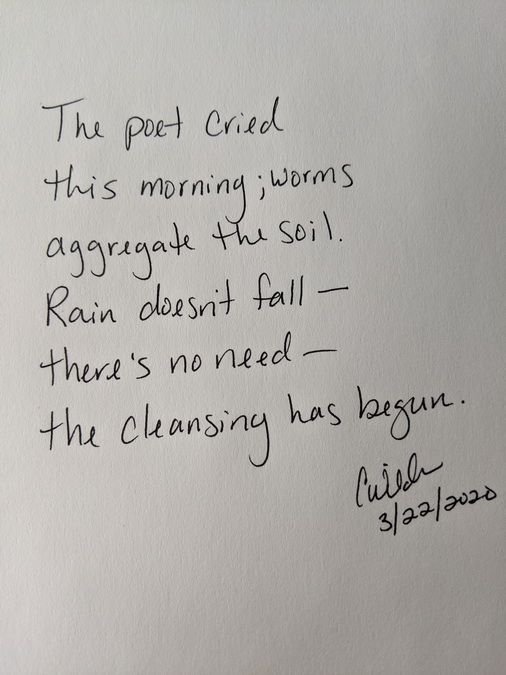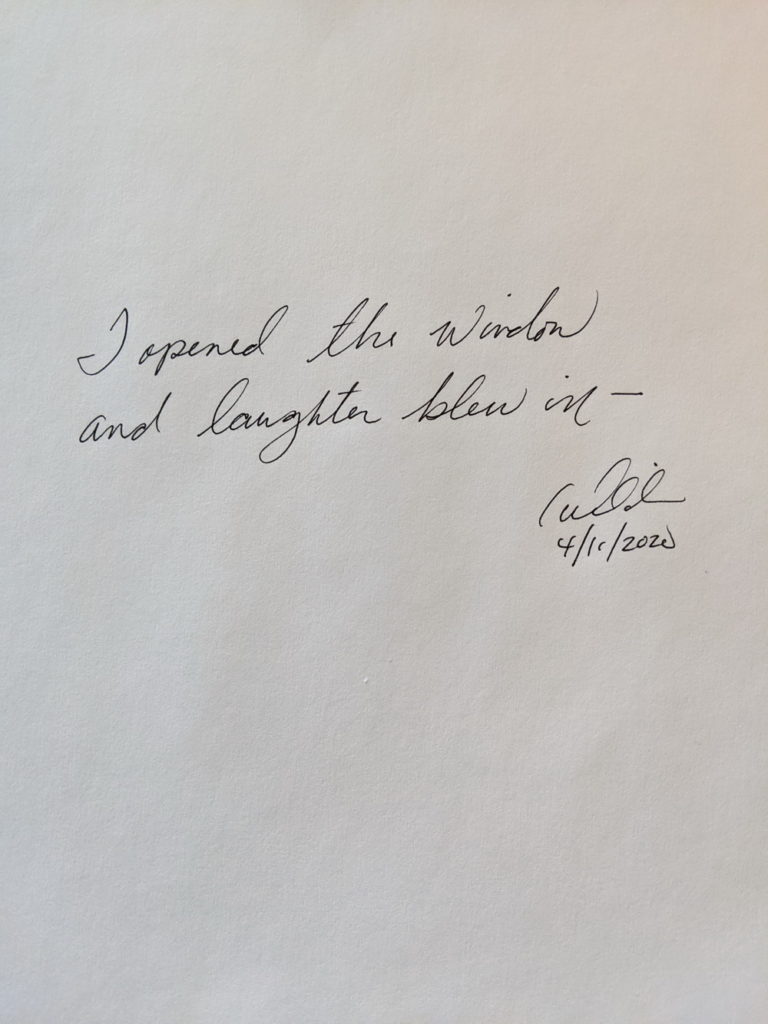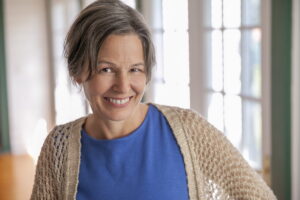
My school-aged children attended their last day at school on March 13, 2020. The following week I transitioned my house and work-life to include homeschool. On Sunday morning I woke up early, before everyone else in the house, and cried. A good, deep cry as I sat at my new “teacher’s desk.” Then I wrote the above poem and felt a wash of relief, so I decided to write a daily poem during North Carolina’s stay-at-home orders. I post them at Coronavirus Daily and on Facebook.
As long as I’ve been writing, I’ve written lyric poetry. In fifth grade, I wrote a poem that prompted the principal to call my parents.
In Poetry as Survival, Gregory Orr says, “How to respond to the strangeness and unpredictability of our own emotional being? One important answer is the lyric, the ‘I’ poem dramatizing inner and outer experience.”
The poem in fifth grade was fiction, but I used the dramatized “I” in order to relate to the content of the poem, which was about sexual abuse. It was 1985, missing kids were on milk cartons and “stranger danger” had been debunked. While writing the poem for a class assignment, I didn’t know I was trying to reconcile that people I trusted might harm me. I used “I” in the poem to get inside my feelings about the new information that changed my view of the world. My teacher thought it was a confession, which prompted the call from the principal.
What is lyric poetry?
Lyric Poetry* – (From Greek for “lyre,” an ancient stringed instrument.) Originally, poetry was meant to be sung, accompanied by music from the lyre or lute.
Lyric poetry now refers to a category of poetry (distinct from narrative poetry and dramatic poetry). A lyric poem is:
- short in form
- concentrated in its expression
- subjective in its observations
- personal in subject matter
- song-like in quality

The relief that came over me when I wrote that first coronavirus-inspired poem is a strong thread of what has sustained me through the past five weeks. My family and I are extremely fortunate so far. We’re healthy. We still have income. We have food and shelter. The added stress in my life is, at this point, minimal in comparison to so many others. But the stress is there–the pandemic touches us all. And just like in fifth grade, writing lyric poetry helps reconcile my emotions.
Orr tells us that “Human culture ‘invented’ or evolved the personal lyric as a means of helping individuals survive the existential crises represented by extremities of subjectivity and also by such outer circumstances as poverty, suffering, pain, illness, violence, or loss of a loved one.”
The Covid-19 pandemic prompted a larger-than-usual collective existential crisis. As a society, we’re redefining what is “essential” in our daily lives. We’re questioning value and purpose. When this is all just a story we tell the next generations, what will we say changed within us? What strengthened? Why?
Write a lyric poem!
It’s difficult to feel hope and suffering–two opposing emotions–at the same time. It’s even tougher to sustain feeling them indefinitely. Yet that is what the pandemic is prompting us to do: be hopeful that we will overcome and be mindful and sympathetic to the suffering.
What do we do with our new emotions? It’s not like any problems we had in our lives before the pandemic disappeared. How do we cope?
In an interview, Benedictine monk David Steindl-Rast says, “Joy is the happiness that doesn’t depend on what happens…Happiness is not steady, but joy can be steady, and that’s what we really want. We want the happiness that lasts.”
For me, writing and sharing a daily poem is a joy through the pandemic that doesn’t depend on what happens. Whether it’s a tough day homeschooling kids, hedging our finances against the possibility of losing income, hearing stories of those suffering because of the pandemic, or the blanket uncertainty in our collective recovery, I have a joy I can depend on. It’s not exactly the deep joy that Br. Steindhl-Rast talks about. I think it’s my way to sustain steady happiness. Writing daily poems built a tangible thread through uncertain times. I transformed my inner experience into something I could see and share.
Tips to write a lyric poem.

- Start with “I” –the subjective and personal experience.
- Do something in the poem. A simple act you do often. “I opened the window.”
- Think of something that relates to the act you wrote down. It could be another action or an idea, a whimsical thought, or an emotion. “I opened the window and the breeze brushed my cheek.” “I opened the window and my eyes softened.” “I opened the window, tears down my cheeks.”
- Keep going, making associations between physical actions, ideas, emotions, or thoughts.
- Try not to think too much, let the first action inspire the next action or idea, and so on.
- Having trouble? You know the game where you say a word and another person has to say the first thing that pops into their head? It’s like that. If you can’t think of anything, go back to the physical act that you know. “I opened the window and walked to the kitchen. I sliced a strawberry and thought of summers with my grandmother…”
- Have fun. Stay safe. Find joy.
*Myers, Jack, Don C. Wukasch, eds. Dictionary of Poetic Terms. Denton: University of North Texas Press, 2003.



